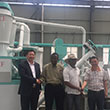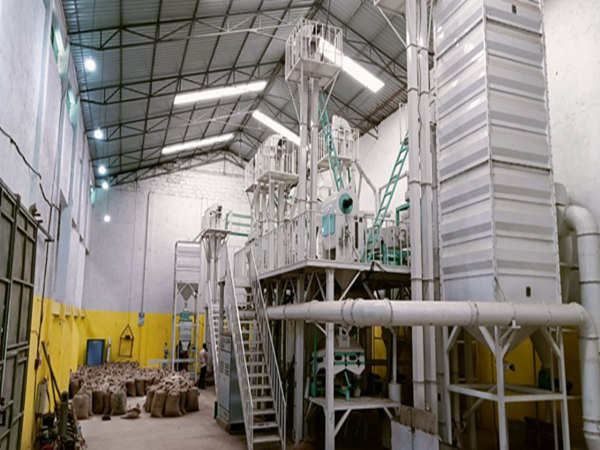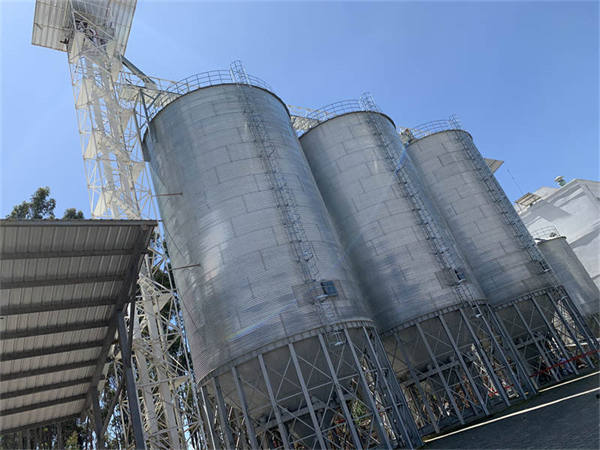Oat Processing Plant and Solution
SynopsisWin Tone oat processing solution adopts the most mature domestic process scheme, and introduces different processing methods for naked oats and raw oats.
Oat Processing Solutions
Win Tone oat processing solution adopts the most mature domestic process scheme, and introduces different processing methods for naked oats and raw oats. First of all, raw oat grains usually contain various impurities such as barley and grass seeds that are difficult to clean. The Win Tone oat cleaning process adopts multiple processes such as stone removal, impurity removal, shelling, hair removal, grading, and color sorting to ensure the cleaning of raw grains. post-purity.
Win Tone oat flakes, the main machine adopts Huayu Wantong's oat shelling machine, oat flake machine, oat dicing machine and other patented equipment, which not only reduces the breakage rate of the product, but also improves the processing accuracy, and also The power consumption is reduced, and the production line can process oatmeal of different varieties, such as whole-grain tableting, dicing and tableting, raw tablet, cooked tablet, etc.
Process advantages: low energy consumption, high yield, intelligent control, many types of finished products, to meet the different needs of the market.
First. Raw materials of oat
After the raw materials enter the factory, the quality inspection department will take samples for quality inspection, and check whether the various indicators of the raw materials are qualified according to the oat quality standard.
Second, the cleaning of oatmeal
1. Destone Oatmeal
After the raw materials enter the production workshop, inorganic impurities such as stones and cinders in the materials are removed by a stone remover. During the work, the angle of the stone plate and the air volume of the fan are adjusted according to the material flow, so that the stones, cinders and other materials discharged from the stone discharge port do not contain oat grains. After the shift is finished, clean up the screen surface of the stone removal machine and remove the impurities on the stone plate.
2. Oatmeal
The material after destone is removed by wheat threshing machine, plane rotary screen and socket wheat separator to remove large and small impurities, dust and magnetic metal objects. During processing, it is necessary to adjust the flow rate at about 3000kg/h according to the different content of impurities in the raw materials, and adjust the air volume to make impurities And the debris discharged from the dust outlet does not contain oat grains. After each shift, the debris on the screen surface of the equipment and the adsorbent on the magnetic separator are cleaned once.
3. Oatmeal Shelling
The impurity-removed material is hulled by the hulling machine, and the speed of the frequency converter of the hulling machine is adjusted according to the material flow and the hulling effect, so that the unhulled and broken wheat grains in the hulled material are controlled within 5%. , the shelled oat grains are separated from the shelled oat grains by the grain separator, and the shelled oat grains are returned to the shelling machine.
4. Oatmeal with Mango
The hulled material is removed from the top of the wheat grains by a wheat brushing machine, and the surface of the wheat grains is smoothed. once.
5. Oat Grading
The dehaired material is classified according to the diameter and length of the material by the thickness classifier and the socket wheat classifier to separate small and large oats and other materials. Before starting the machine, it is necessary to replace the sieves with different apertures according to the customer's processing standard to meet the customer's standard. The material enters the next process, and the sieve holes are cleaned once after each shift is processed.
6. Oatmeal color selection
The classified materials are removed by the color sorter. During operation, the feeding volume and sensitivity of the equipment are adjusted according to the material flow and color sorting effect.
Third. Cooking process
1. Boiled wheat
1) Thoroughly clean the residues in the barrel cavity before and after cooking the wheat, and spray alcohol to sterilize before the shift, and then empty the residues before unloading for production;
2) Control the steam pressure of the cooked wheat to 0.40MPa, the temperature to 100 °C, and control the amount of steam reasonably, so that the moisture of the cooked wheat is controlled between 15-16%, the wheat grains are slightly green and soft, and have a slight fragrance.
2.Baked wheat
1) Control the steam pressure to be 0.60-0.70MPa, and the temperature of each layer from bottom to top is in the range of 60-70-80-90℃;
2) Reasonably adjust the flow rate to be controlled at about 1T/h, and often observe whether the blanking of each layer is smooth to ensure uniform baking;
3) Reasonably adjust the air suction volume of the fan, so that the baked wheat grains are not sucked out with the dust;
4) The moisture at the outlet of the roasted wheat grain is controlled between 8-9%;
3. Oat Cutter
1) Reasonably adjust the flow rate and rotation speed to make the pelleting uniform;
2) Adjust the size of the damper of the light-miscellaneous separator to ensure that the oat husks can be removed, but the grains are not sucked out;
3) Clean the equipment frequently, check whether the parts are loose, and avoid foreign objects falling into it.
4. Cooking and Drying
1) Control the steam pressure of steamed wheat to be 0.40Mpa, the temperature to be 100°C, and the moisture of wheat grains to be 11-12%;
2) Master the flow of wheat grains and steam volume to ensure that the simmering wheat is sufficient but the wheat grains are not sticky;
3) Before and after each shift, clean the residues in the cavity of the couscous barrel, spray alcohol to sterilize before the shift, and transfer the residues by idling, and then unload for production.
Flouth, Tablet
1. Control the tableting flow at about 1T/h, and cooperate with the feeding speed of the couscous, so that the couscous barrel and the heat preservation barrel are always full of materials during the production and operation;
2. Adjust the gap between the sheeting and the rollers, so that the sheeting thickness is: instant oatmeal 0.35-0.45mm, quick-cooking oatmeal 0.55-0.65mm, and the thickness is uniform;
3. Regularly observe the cutting condition, clean up the sticky mass and wheat wool generated in the couscous tablet, and avoid mixing foreign matter or falling into the tool during operation.
Fifth. Drying, cooling and screening
1. Before drying and cooling, turn on the heat exchanger, enter the hot air for sterilization and sterilize, and idle the cooling sieve, take out the residue, supply the hot air for 10 minutes, and then close it. After all the cereals are taken out, the cooling sieve is idling for 3 to 5 minutes;
2. Observe the operation of the equipment. According to the moisture content and temperature of the finished product, the heat exchanger and hot air volume can be adjusted. If any abnormality is found, the relevant process and management personnel will be notified in time, and the shutdown will be resolved;
3. The moisture content of finished oatmeal should be controlled within 10%;
4. Frequently clean the cooling screen, vibrating screen and surrounding hygiene to avoid mixing with sticky foreign matter;
5. Check and clean up the magnetic separator and leftover material after work.
Sixth. Packaging and storage
1. The packaging should be tight and flat, the inner and outer packaging and signs correspond closely to the materials, and the measurement should be accurate (25 kg/bag);
2. Thoroughly clean the packaging workshop before and after each shift, the packaging should be sorted and stacked, and the ultraviolet space should be sterilized for more than 30 minutes after the shift;
3. Comprehensive sampling inspection before storage, defective products should be remedied or reworked according to the situation;
4. Record the product quality and production status when entering the warehouse for easy checking;
5. Avoid throwing, breaking and soiling the packaging during the storage process.
















Leave a reply